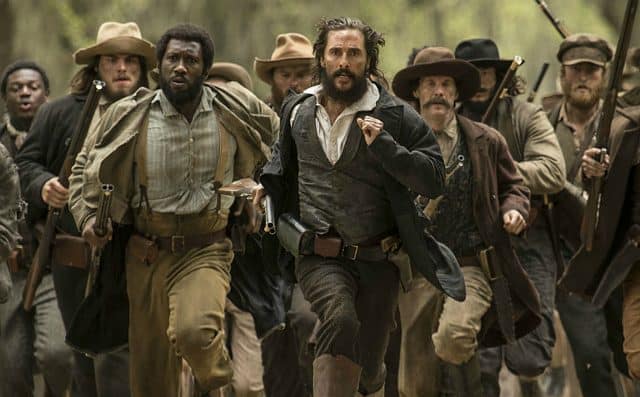
Why should everyone go see Free State of Jones? Because last week was a terrible week in what has been a summer filled with horrible events. Even worse is that these events seem to be part of what feels like a sad and painful new century. Yes, some great things have happened – like the first African-American president. Yet, the 21st century in America has also been one of endless mass shootings and, at best questionable, killings of African-Americans at the hands of the police. After the week we just had, I found it hard to find much point in writing about entertainment.
Yet, entertainment serves a purpose. Sometimes a show or movie is the one thing that keeps a person from drowning in a sea of negative realities. A break from the onslaught gives a person to strength to deal with it. Plus, in varying levels, there is art in entertainment.
In art we find appreciation, and commentary on the world around us. Art can enlighten us to things we did not know and make us think about things that are perhaps uncomfortable. Our greatest modern artists – be they novelists, singers, poets, painters, or filmmakers – do these things in ways that touch our minds and hearts in ways not easily forgotten. Art can sometimes lead us to answers. Free State of Jones is the kind of film that does these things. Its topic is one that is timely in the wake of the events of last week that, once again, sent the country to its knees.
Black Lives Matter, Dallas, and the Free State of Jones
In the same week that America celebrated its Independence Day there were yet more rounds of shooting deaths with race as a factor. Philando Castile in Louisiana and Alton Sterling in Minnesota were yet two more senseless killings of African-Americans at the hands of police. Both shootings were captured on camera and went viral.
Then in Dallas, there was a heinous attack on police officers by an African-American former soldier who was enraged by the killings. The sniper murdered Dallas police and transit officers Patrick Zamarripa, Brent Thompson, Michael Krol, Michael Smith, and Lorne Ahrens – all who were Caucasian – and injured 12 others. Before finally being taken out by the Dallas police the man (No, I’m not giving his name. Why do we always name the bad guys?) told officers that he was angry about the shootings of Castile and Sterling, angry at white people and wanted to kill police officers.
What does last week’s maelstrom of racial prejudice and hatred have to do with a movie? In the wake of this new onslaught of grief the Mayor of Dallas, Mike Rawlings, spoke these words at the city’s interfaith prayer vigil for murdered officers:
We will not shy away from the very real fact that we as a city, as a state, as a nation are struggling with racial issues; they continue to divide us. Yes, it’s that word ‘race’. We’ve got to take it head on.
(You can find his entire speech here)
The question to ask yourself is this: what is meant by “continue”? Continue from when? Are we talking about 2014? After all, Dallas is not the first time there has been a retaliation on police officers by an individual upset about the racial disparity that appears to get African-Americans more likely to be killed by one. In 2014 New York Police Officers Rafael Ramos and Wenjian Liu were assassinated by an unstable African-American man angry at the police officer killings of Eric Brown and Eric Garner. The killer’s actions were mourned and condemned by black and white people alike – just as what happened in Dallas is being mourned now.
Unfortunately, problems involving the police and race aren’t new. As The New York Times mentions, the issues seem reminiscent of the 1960’s and early 1970’s. However, even that turbulent time doesn’t get to the root of the problem. One would be better served to look at the summer of 2015 to gain insight to the real culprit.
Last summer we were mourning the murders of nine African-Americans murdered in South Carolina’s historic Emanuel African Methodist Episcopal Church. The killer said he wanted to ignite a “race war.” Instead, the families of the victims forgave the shooter and the state of South Carolina removed the Confederate flag from the state capitol.
What the Film is About
It is what that Confederate flag came to represent that divides this country today – and the division continues to bleed into everything. The Free State of Jones is the story of some historical events during the US Civil War that few knew about. Through turning these historical events into a film viewers are shown three things:
- That unity across racial lines is possible.
- The reason we today have so many problems involving race is that although the Union technically won the Civil War…they kind of didn’t.
- The visceral feelings of horror about the level of racism upheld after slavery was technically abolished.
Here is one of the film’s trailers:
[youtube https://www.youtube.com/watch?v=UctBJHH63yU]
What the Free State of Jones does is give viewers some historical insight on the Civil War and its aftermath. The unique lens of Newt Knight’s life story brings to light a painful truth. The war may have ended with the South surrendering, but neither side truly won.
Had the Union truly won, the world that the film’s central character, Newt Knight would have been one that continued on. Instead, the group of former slaves and poor white men is forced to move to a separate area. Once President Abraham Lincoln was assassinated all the ideas he had put in place to bring the South out of the mindset of slavery was undermined with new “black laws” that later evolved to became, “Jim Crow” laws. We see this in the immediate aftermath when the young boy is reclaimed by his former master. The lines in the court about the “former apprentice” are almost laughable – except that it’s exactly what was done. It reinstated that child’s slave status using a different name.
The film’s writer and director Gary Ross (Hunger Games, Seabiscuit, Pleasantville) spoke passionately about the fact that many people don’t know the truth about the Civil War and the period known as Reconstruction. For the Huffington Post he broke down four major things that people had wrong information on – or simply didn’t know. The first is that it’s true the Civil War was fought over slavery. He makes that abundantly clear. The second is the idea that everyone in the South wanted out of the Union. Actually that isn’t true. The biggest example: West Virginia. There was no West Virginia before the Civil War. It exists because it “didn’t agree with the goals of the Confederacy.” You can watch the entire video here )
The Free State of Jones Review
It’s true that from a technical point of view this is not a perfectly executed film. Part of this is because it’s covering a lot of ground and several topics in a limited amount of time. Free State of Jones might have been better served as a long-form movie, also known as a mini series.
Still, there is more to a film than the tech. A film can do everything right and still be something you wish you’d never laid eyes on. My personal best example would be No Country For Old Men. It’s technical perfection in cinematography, performance, and writing is the service of violence and general nihilism. It’s a soulless piece of work. (While a few top critics had similar reactions – including Stephen Hunter from the Washington Post and the late great Andrew Sarris – most critics loved this film and it’s picturing of senseless violence.) The film went on to win four Oscars, including best picture. Every since then I’ve come to appreciate that how I feel and react to the story being told is as important as how a film is structured, acted, and shot.
Free State of Jones pulls you into the lives of its characters and their circumstances. Yes, the script uses a lot of signage indicating time jumps. Yet, neither time jumps, nor fleeting thoughts about pretty swamps, kept me from being on edge throughout most of the movie.

Life in the swamp…
Newt teaches Rachel (Gugu Mbatha-Raw), his later to be common-law wife, to shoot.
Some reviewers didn’t like that time was spent covering Newt’s journey back to his farm and other non-battle events. However, the time spent there are what drew me in deeper to the characters. They also made the impact of the Civil War on the South more visceral. Streamlining the script down to focusing on just the major battles would have made this just another war movie. There are plenty of those.
However the film couldn’t have been pulled off without the great work put forth by the entire cast. Their realness is what keeps the illusions together when other things might give you pause. Everyone gives good performance, but there are a few stand outs. Newt’s first wife Serena is portrayed by Keri Russell – and I didn’t even realize it was her until I read the credits. That’s how transforming her performance was. Another surprise is the relative newcomer Cade Mansfield Cooksey. He plays the young hero-worshipping Thomas, and his work makes him an actor to keep an eye out for in the future.
With Matthew McConaughey the portrayal of Newt Knight may feel like it is a given triumph. The part is definitely in the center of his wheelhouse. Still, what he does is so spot-on that one of Newt’s descendants – who was an extra in the film – was in total awe.
It was like Newt himself was standing right there in front of me. It made me really wish my grandfather was still alive, because we were always saying someone should make a movie about Newt. (www.smithsonianmag.com)
Just because it’s the kind of part McConaughey does well shouldn’t take away from the fact that he is riveting in it.
Finally, there is Mahershala Ali as Moses. He is compelling as a man who has suffered through the horrors of a slavery leader in his own right – and he more that holds his own when paired with McConaughey. Moses is one that initially helps save Newt.
Yes, he helps save Newt. So much for the whole, “white savior” charge that I’ve read in a few reviews. I do agree that the film’s marketing campaign pitched it as such. Once viewing the film though it’s clearly not the story. The fact is that the runaways were doing relatively fine before Newt arrives on the scene. He needed them far more than they needed him. The relationship becomes one that is mutually beneficial – which is one point that the film makes. Nothing Newt later does is possible without the help he gets from Moses and the other runaways.
The film makes Newt a leader of men – period. His attitude towards and relationships with the former slaves soon straightens out the other white men that show up. It’s hard for some to believe, but Newt was a white man from the south who had lost the racial prejudice that was seen as a fact of being during his time. It’s the period after the war that reimposed the separation of black and white, but Newt never picked that mantle up again. This is yet another major point the film makes. (For more on this topic check out this CNN article)
Beyond the strength of the performances there are visually some great scenes.. The battle sequences are gripping and realistic. Violence is a part of this story and the filmmaker wields it like a surgeon’s knife. It’s not in every scene, but when it’s there it hits hard and underscores the horrors of particular choices. Though there are some other visuals that don’t work as well. In particular, that swamp is lit like a Harry Potter or Tarzan set. It’s set up could be called pastoral. Of course, that may have been the director’s intention because there is a kind of legend-making vibe going on.
That initial time jump to the 1948 courtroom felt odd. However, it quickly became apparent why it was there – and the payoff was good. Not only do we see how Newt’s legacy continued, but we witness how much the South didn’t change. There was in fact a time where black men and white men came to see each other as brothers and fought for a common cause. It is possible to achieve. Considering all that’s going on in the U.S. today that is a message we all need to hear.
The Civil War History Within Free State of Jones
Free State of Jones gives moviegoers a lot to think about. It reminds us that the intentions of the Civil War to end all slavery and give African-Americans full citizenship, equality, and help integrate them into society did not happen. Instead compromises laws in the South were made that undermined the freedom of former slaves. Terror groups like the KKK came into power with little sustained action to stop them. What happens to Moses certainly gives viewers a sharp and devastating example of that reality.
The other way of showing how many things did not change in the South is the juxtaposition of the flashing forward to 83 years later to the events in Newt’s story. Including that 20th century story tells viewers the separation of Southern African-Americans and White Americans continued. It also showed that the baseless stamp of inferiority that was placed on being African-American continued as well.
Truthfully though, there were far too many things going on during that time to explain in the time allotted in the film, or in this article. Hopefully the movie will create a desire to revisit American History and see what actually was going on. Here are a couple of quick points to start off with.
President Lincoln and Congress
In his final public address it’s clear that Lincoln and Republican Congress wanted the same things in terms of the fate of African-Americans: freedom from slavery, equal access to education, and the right to vote. They just had different ideas of how to accomplish it. As President, Lincoln was more concerned about bringing the Confederate states back into the Union. Congress was worried about the Confederate states undermining the goal of making African-Americans full citizens:
They were worried that state-level definitions of black freedom would not protect the freedmen and that Southern whites of dubious loyalty would too quickly acquire power over black liberty. Congress wanted several things: to impose more national control, to provide for a longer process of reconstruction, to increase the standards of loyalty for leadership and participation in government, and to provide better guarantees for black liberty.
From where we sit now, Congress was right to be concerned. All the things they feared came to pass.
2. Although Lincoln was willing to compromise on voting rights for African-Americans, it’s not what he actually wanted to happen. As this quote from Lincoln shows, he had many of the same concerns as Congress.
The war is nearly over. Just when it will end, I can’t say. But it won’t be a great while. Then the Government forces must all be withdrawn from all the Southern states. Sooner or later, we must take them all away. Now, what I want you to do is this: do all you can, in any and every way you can, to get the ballot into the hands of the freedmen. We must make voters of them before we take away the troops. The ballot will be their only protection after the bayonet is gone, and they will be sure to need all they can get.
This is why the assassination of Lincoln was such a devastating blow to the country. His idea was to coax the South into change, not mandate it. However, he wanted change.
President Andrew Johnson
Without Lincoln around to help hold things together it was the vision of the Vice-President suddenly made President, Andrew Johnson, that guided the Reconstruction period. Lincoln’s hope was that the states would abolish slavery and support the emancipation process with schools and the right to vote. That was not the vision of Andrew Johnson:
Johnson believed the Southern states should decide the course that was best for them. He also felt that African-Americans were unable to manage their own lives. He certainly did not think that African-Americans deserved to vote. At one point in 1866 he told a group of blacks visiting the White House that they should emigrate to another country.” http://www.ushistory.org/us/35a.asp
It is Johnson that gave Southern States back the power to oppress African-Americans. For instance, he gave the okay The various Black Laws that allowed for “apprenticeship.” This is also when the rise of the KKK terrorist activities starts.
The Impact of the Civil War on America Today
Today those of us in Northern “Union” States proudly say we never have Jim Crow laws. That is true. However, a look at the actual history shows that when things got financially difficult in 1873 the North abandoned their concerns about the rights of former slaves in the South. They continued to turn a blind eye to it for nearly 100 years.
It’s not until the1960’s civil rights movement that the continued injustices left over from slavery would be addressed. It’s fair to say that in order to keep the peace of the nation, the nation allowed racism to fester as a norm in the conscious of this country a century after the end of the Civil War. Yet common statements from some caucasian Americans is that “slavery was a long time ago” or, “my family never owned slaves.” The truth is that, as a nation, we allowed a construct of racism to exist without comment well into into the 20th century. This is not to negate the idea that things have changed. Nor is it to suggesting that there has not been progress in the goal of racial equality. There certainly has been. Otherwise you likely wouldn’t be reading this article.
At the same time, the idea that the racial prejudices bred into a national consciousness will have disappeared over two or three generations is ridiculous. There are people today born and raised in a world where Jim Crow racism was the norm. Some of those people are our congressmen, senators, and police commissioners. They’ve raised children while having those ideas as a part of their heritage. Even with the heartfelt desire to see all people as equal, there is a branded unconscious prejudice that exists. On top of that, it’s not like straight out racists have been deported from the country. The issues of race and racism have been bred into the country’s DNA – and that actually could be literally.
Several studies, including this one in 2015 from Mount Sinai on Holocaust survivors have suggested that negative physical and mental effects of trauma can be passed down via a person’s genes. That study is based in the scientific field called Epigenetics. At this point, there is still discussion and disagreement around how this is done. There is though this certain point of agreement:
The effects of severe stress and other exposures has been shown to be inherited intergenerationally, multigenerationally (to grandchildren) and sometimes even transgenerationally (to great-grandchildren), both in animals and in people. The Dutch famine of 1944 and the polybrominated biphenyl exposure in Michigan in 1978 have provided evidence that exposures that occur prior to conception and in utero can have lasting effects on subsequent generations.
“DNA is not destiny,” is also true, the factors involved in epigenetics are malleable by the factors mentioned above. It is a combination of nature and nurture that determines things. Still, the effects of the Holocaust (which took place from 1933 – 1945) showed up in the subsequent generation. It stands to reason that over three centuries of begin systematically oppressed, abused, and racially discriminated against didn’t just magically lose its power in 1965. For instance, the instinct to run from the police, whether you’ve done something or not makes sense given a legacy of slavery and Jim Crow. Likewise, the poisonous idea that a black man is dangerous and to be feared – that flight or fight reaction may also be passed down.
Furthermore, it’s not only with how white people see black people, but how black people see themselves that’s involved. This quote is from a University of Maryland 2014 study about internalized racism and its effect on the health of black men.
In the U.S., national studies have found that 70 percent of respondents have an implicit anti-black bias–and roughly half of African-Americans do.
Self-hatred in any person rarely leads to good outcomes. Self-hatred that is validated by the world around the person has to be worse. The low expectations given to certain African-Americans can become a negative self-fulfilling prophecy. This is neither good for the individual, nor society as a whole. We waste a lot of potential with our projections.
I hope you understand that none of this discussion is about excusing anyone’s behavior. On the part of the plotted murders of police officers and on the shootings of these two black men, wrong, is wrong, is wrong. The question is this: how did we get here? As the saying goes, those who don’t know their past are doomed to repeat it.
The Wrap Up
The Harlem Renaissance poet, Langston Hughes, wrote this in 1951:
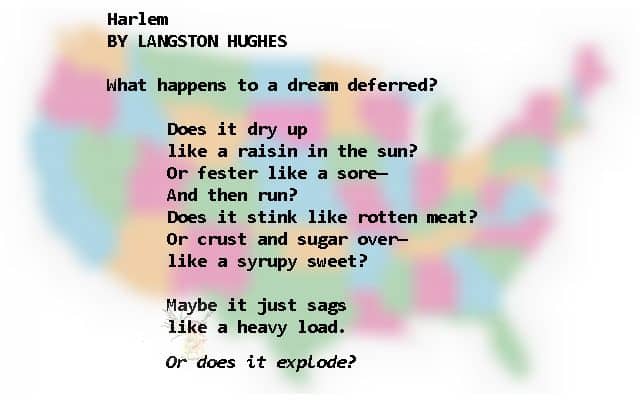
I think the first time I read that poem was in my eighth grade English class. On the night of the Dallas shootings it kept running through my mind….
Seeing the Free State of Jones, forces the viewer to look at a period of time that we’ve glossed over for far too long. As the past week has shown, glossing over has cost us all dearly. At the same time, despite the ending, the film offers a certain hope. For one, it showed men deeply steeped in racist ideas come to see they those ideas were wrong. Then, in 1948, Newt’s descendant did something surprising. The man had no knowledge of his racial history. Yet, he stood up against those same racist ideas that his great, great-grandfather did. He actually went to jail for them. If trauma from the past can be passed down genetically, perhaps knowing the truth about race can be as well.
What Mayor Rawlings said after the shootings in Dallas is true. If we want the madness to stop we must deal with the issue of race and racism in this country. Rawlings made a huge start with that statement. He built upon it by acknowledging a correlation between the knee-jerk defending of cops under all circumstances and the general distrust of the police in the African-American community.
This standoff between the police and the African-American community set in motion the perfect storm for what happened in Dallas. It only takes one bad cop to destroy lives and sown seeds of mistrust. Likewise, it takes but one mentally on edge person with gun access to do the same and cause havoc. One person can make a difference. In these cases, it’s a negative one.
However, it takes a village to raise a child. These individuals did not grow in a vacuum. Racism, and the ills that come with it, will end when the broader society sees and understands the how and why of its existence. The legacy of the Civil War is that we continue to have a nation that, consciously or not, says black lives don’t matter as much as white lives. Only when there is more awareness and acceptance of what has been will we see positive change.
In Free State of Jones this understanding is exactly what happens. Newt realizes the Civil War served to keep plantation owners rich while white men like himself stayed not much better than slaves. He then begins to see the truth of black people’s humanity. Next he’s forced to confront the fact he’s been assuming himself to be better than slaves. After that he loses that mindset completely. From there he is able to get the white men in his group to understand the same thing. This also allows the former slaves to trust Newt as well. It’s not that they ever saw themselves as being less than. It’s that they had to see if Newt saw them that way.
This isn’t the 1860’s where all problems were thought to be solved with a gun. If Newt were around today he’d probably be out protesting with a #BlackLivesMatter group. The group does not condone violence as a solution. If anything they help to channel anger and rage into constructive and peaceful protest.
In the sixties the phrase, “Black is beautiful” was used to affirm to African-Americans – and the world – that whiteness was not the only standard of beauty. The assumption at the time was that it was. It wasn’t saying there weren’t other types of beauty. The simply added black looks to the palette of what is considered beautiful. The awareness helped usher in changes for the better. The #BlackLivesMatter movement is doing a similar thing. It has raised the consciousness of the nation around the disparate amount of black people killed at the hands of police officers.
Free State of Jones gives me hope in the face of an onslaught of bad news. The film shows a time where black and white people came to know each other as equals. They were able to live together – and fight together – for their common good. (I could talk about the women fighting alongside men and how refreshing that was to see. That’s an entirely different article, though.)
The above suggests that when the roots of racism are pulled out a real change can occur. Unfortunately, the weeding out of racism that started back in the time of the Civil War was never completed. Instead, the ideas behind the Free State of Jones were smothered. Because racism has continued to be sown throughout our history we have been brought to this moment. It’s past time that we as a nation work dig this stuff out. We saw some digging being last year in South Carolina. What I saw from Mayor Rawling – as well as from Dallas Police Chief David Brown – gives me hope that more is coming. Let us hope so. The dream has been deferred long enough.
 Follow Us
Follow Us
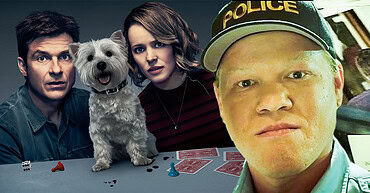



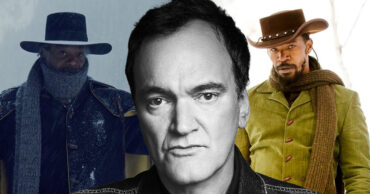
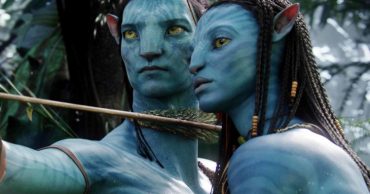
Visitor Rating: 5 Stars
Visitor Rating: 4 Stars
Visitor Rating: 5 Stars